Week 4 of inTAROTduction, your Introduction to Tarot: Joy’s Favorite Tarot Decks, Part 2
Welcome back to inTAROTduction, your Introduction to Tarot and induction into the world of all things tarot, including tarot deck collecting. Today is a continuation of last week’s post. Last time I shared three of my best working client decks, the Morgan Greer, Tarot of the Old Path, and Robin Wood. Today I’ll show you three more of my favorite tarot decks.

This year I’ve launched a series on brand-new beginner topics, starting off with deciding between tarot or oracles, how to choose your perfect tarot deck and some of my favorite decks. Coming soon I’ll explain my unusual requirement that students not use the Rider-Waite-Smith deck when they first start out. I’ll also cover topics such as what you need to know about different styles or lineages of tarot decks, how to connect with your intuition, advice on how to start reading the cards right away, and just the amount of history you need. This is your go-to spot for getting started with tarot!
Joy’s Favorite Tarot Decks, Part 2
Although I have around 150 decks in my collection, it’s hard for me to recommend decks due to the fact that not every deck I own is one I’ve used extensively. Yes, I’ve read with almost all (some are just for study, teaching classes, illustrating blog posts, etc.), but not to to the point of knowing every card in the deck or using them regularly enough to have a deep understanding of their benefits and faults. So my list of favorite decks is limited to decks I use or used on a regular basis for an extended period of time with clients. I would readily recommend any of these decks to both new and experienced tarot readers. Today’s decks are DruidCraft Tarot, Lo Scarabeo Tarot, and Legacy of the Divine.
DruidCraft

One of the great things about teaching tarot is that I am often introduced to new decks by my students. That’s how I learned about the DruidCraft. When I was teaching tarot online at Avalon Center for Druidic Studies from 2005-2007, a student used this deck for class. Her descriptions of the cards caught my attention, and her references to the Welsh myth of Taliesin captured my interest.
I don’t remember exactly when I bought this deck. However, I noticed several clues in the photo I pulled for this post. This photo was taken at a Denver Tarot Meetup event at the metaphysical store Isis Books (their old location on Colfax) August 24, 2006. The box for the deck is on the corner of the table, and I always keep decks in bags, not in the box. Also, the cards appear to be in order as I lay them out, indicating that I haven’t shuffled the deck yet. I wonder if this was the day I purchased this deck!
The DruidCraft Tarot is still one of my favorite decks. I love the artwork by Will Worthington. His artistry combined with attention to detail let you fully enter into the world of the deck. The cards are inspired by the Rider-Waite-Smith tradition without slavishly following it. The art relocates the tarot symbolism into the world of Celtic myth and Druidic paganism, and yet keeps the iconography simple enough that practically no knowledge of those influences is needed in order to easily read and understand the cards.
The characters are lifelike but not photo-realistic, their actions are clear, and their expressions relatable. Each scene is a world unto itself where recognizable characters inhabit lush landscapes and rustic interiors. The elements of nature open up adventures of sky and stone, grass and leaf, fern and flower, fen and lake. Water flows and settles, surface splash and lurking depth. Fire fights and forms, lightens and storms. Bright fields roll away into distant hills, while shadowy glens creep closer, and menacing woods overhang.
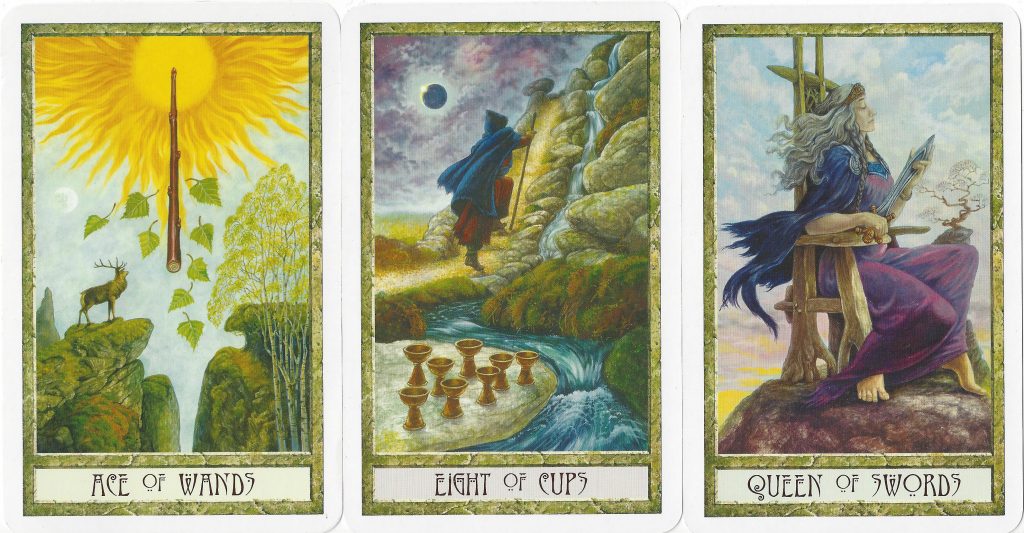

I have no complaints about this deck. This deck is a perfect candidate for a borderectomy, as the cards themselves are large–the better to see the artwork–but hard to shuffle. Reasons combined to force me to stop using the deck. When I used to read at the Mercury Cafe (my favorite restaurant in Denver!) I ended up reading for a man who seemed a little too interested in the Lovers card, and that uncomfortable feeling again made me want to revert to decks with less nudity (not that I ever settled on one). A hiking trip cut short by an unexpected and intense cloudburst ended up ruining the deck, which was in a heavy tarot pouch, inside a closed backpack — yes, we were soaked to the bone. This that and the other thing prevented me from properly replacing the deck until recently, so I haven’t read with it for a long time, but have continually missed it. I’m glad to finally have it back in my collection!
Lo Scarabeo
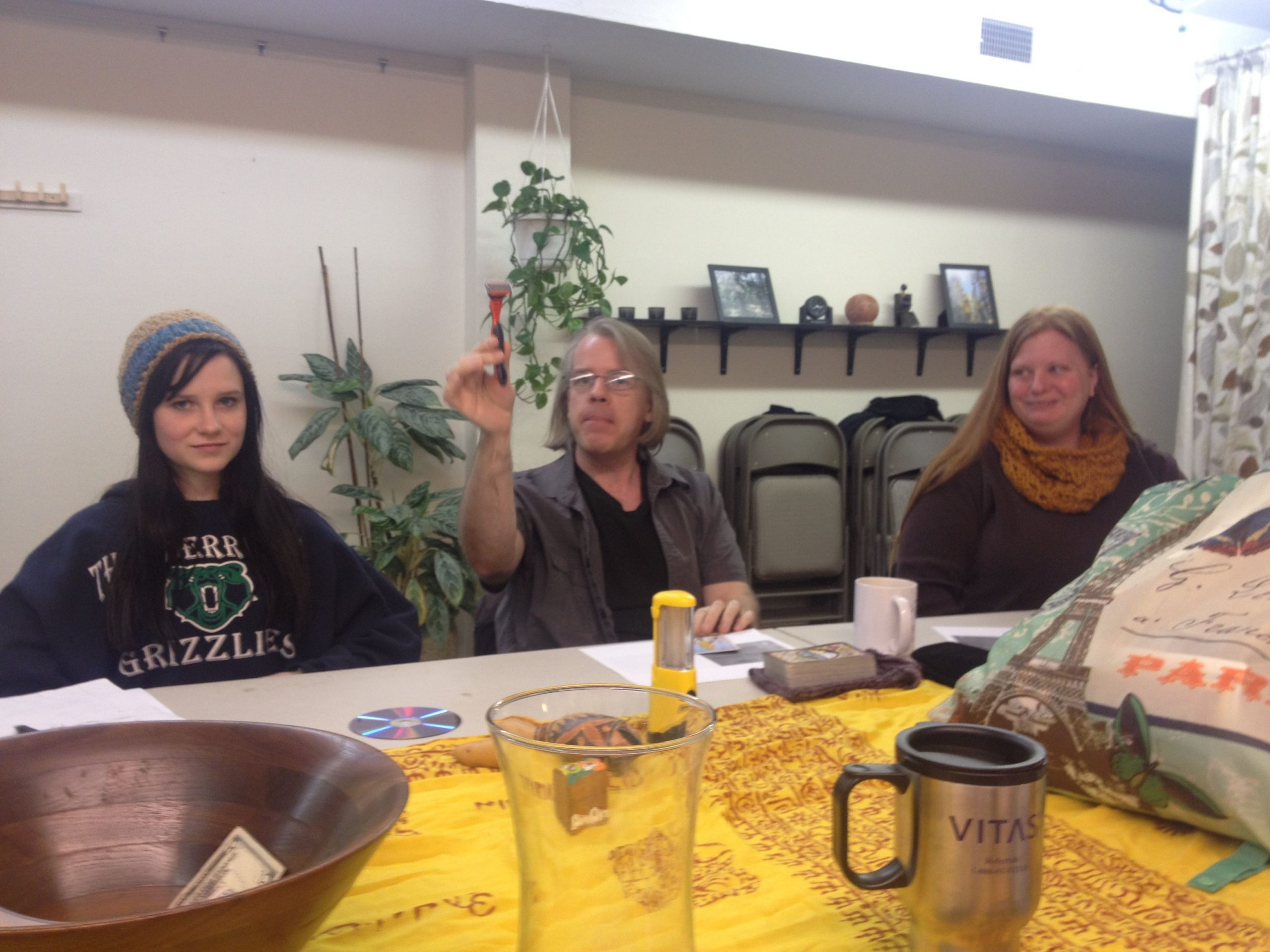
One day, probably back in 2012, a client handed me her copy of the Lo Scarabeo deck and asked if I had any use for it — she didn’t like it. I said sure, I can add it to the collection of decks for the Denver Tarot Meetup — I keep a book bag full of loaner decks. Out of curiosity I used the deck myself to see if it worked. And it did. This is a functional, workhorse deck with a clear and clever voice. I ended up using it as a client deck for almost a year.
This deck is called Lo Scarabeo Tarot and is published by Lo Scarabeo (distributed in the U.S. by Llewellyn). The art is by Italian illustrator Anna Lazzarini and, like many of the decks published by Lo Scarabeo, seems a bit flat and cartoonish. However, the cards were designed by the hip and smart Mark McElroy, designer of the Bright Idea Deck, Tarot of the Elves, and several other decks, and author of a variety of books on tarot and other forms of divination. One problem all too common in the world of tarot is that decks are drawn by people who don’t know anything about tarot. The result is stunningly beautiful decks that don’t work because they don’t have the brain behind the curtain. On the other hand, there are savvy, experienced readers who design decks that are sadly tossed aside due to lackluster or kitschy art, but are in actuality intelligent and insightful decks. This is one of the latter.
The marketing buzz for the deck was that it integrated the three major tarot traditions: the Marseille, the Waite-Smith, and the Crowley-Harris. (I’ll discuss the idea of tarot lineages in a future post in this series.) For an experienced reader, this offers an easy-to-read, familiar feeling lexicon that nevertheless pleasantly zigs when you expect it to zag. It also fulfills expectations about “correct” symbolism without the rigidity of clone decks. For the beginner, it introduces what will become familiar symbolism, but without the hoity-toity attitude. There are plenty of stories in the lighthearted and pretty artwork, emotive characters in empathetic situations.
This is a chatty deck. In January 2013, Sherry Shone led a presentation for the Denver Tarot Meetup called “Tarot is All Around You.” The table was filled with an assortment of unusual or everyday objects. We each chose one, then pulled a card for it. The object I ended up with was a spice jar with a red lid (you can see it in this photo). The card I pulled was the Six of Wands. I made a lame comment that tied the card and object together in a moderately relevant way. Then as I looked at the image, the people, the man on the horse, the shield, the victory crown, I thought “bay laurel” — the symbol of victory and a spice as well. “This is a sage deck” I quipped. That’s chatty for you — I’m not a punster, but the deck was talking through me. This episode encompassed my experience of the deck. The deck responded in a way that was not my usual way of looking at things. The deck knew that of 78 cards, the most relevant to a jar of herbs is the 6 of Wands with its laurel victory wreath. And when I couldn’t figure it out on my own, it told me why in a voice that wasn’t mine.

Why did I give up this deck? Partly because I found my next deck, the Legacy of the Divine. But partly because of all the cards, the 6 of Cups didn’t resonate for me. It followed the Crowley-Harris Thoth lineage. However, the meanings I had developed for that card, even going back to my first deck, the Barbara Walker deck (which also has a Thoth influence), were about childhood, memories, friendship, and simple, true love. The Golden Dawn title for the card is “The Lord of Pleasure” and Crowley uses that keyword as well. The LoScarabeo card shows a sexy, naked woman posed alluringly in front of two columns of three stacked basins overflowing with water. The image works. The meaning is clear. But I needed the card to approach the topic in a different way. As a result, I was always at a loss when pulling that card whether to read it as it stands or go with my old familiar associations. I normally love the process of adapting to a new deck, but this is the card that I couldn’t bend to.
Legacy of the Divine
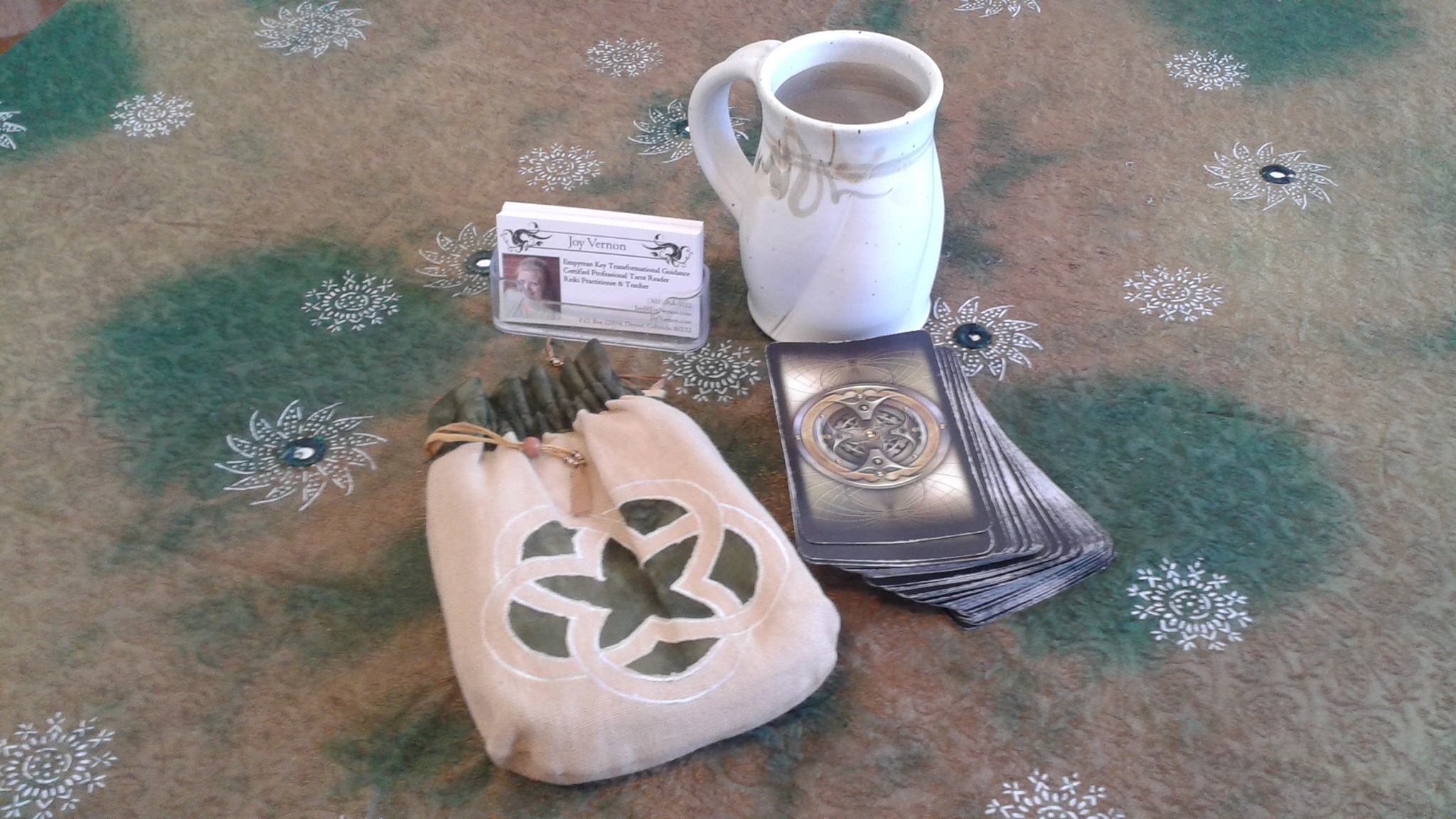
I first heard about this deck from my friend and fellow blogger Amanda Donnelly of 78 Whispers. I was familiar with artist Ciro Marchetti‘s other work. I was meh about the Gilded. I liked the Tarot of Dreams better but it never sank into use as a reading deck. At a tarot social held at the now defunct Gypsy House Cafe one day in 2008, Amanda pulled out of her Mary Poppins bag of tarot a new deck by this author. “I think you’ll like this deck,” she said. I never like any decks. It takes a long time for me to get used to most decks. I looked through it. I handed it back.
Fast forward five years. In early 2013 I attended a tarot social at the Athenian Restaurant in Aurora. One of the Denver Tarot Meetup members, Cynthia, had started a side hustle selling tarot decks. During the intervening years the Legacy of the Divine kept popping up. When a deck repeatedly strikes me as beautiful, intriguing, innovative, unusual, attractive, or otherwise desirable in some way, I get it. Sometimes. I saw that Cynthia had it for sale, now in a mass market edition from Llewellyn. I went through my usual list of reasons not to get a deck, and this time none of them clicked. So I bought it. Finally. And it has been my main client reading deck ever since!
The Legacy of the Divine is beautiful, eloquent, artistic, and inviting. It is Ciro’s masterpiece, designed, drawn, and authored by him. The deck comes with a companion book which, I’ve been told, tells a story about a post-apocalyptic world. I have never read the book, but the images speak so clearly that I’m sure if I finally read it, I would recognize it, like hearing a favorite story told in another language.
What makes this deck wonderful is the story. Even though it’s a mythology that I’ve never heard told, it brings a cohesiveness to the deck. This is a difficult task for a deck creator. Some attempt it, but when poorly done the reader has a gnawing sense that they are missing something, or that the puzzle doesn’t fit right, like pieces from different pictures got mixed together. However, when well done the reader feels transported to another world. All the well-known tarot images are uniformly shifted to be seen through a specialized filter.
To understand what I mean, consider going to see a Shakespeare play. You might go to a production of Romeo and Juliet. This is a story you know well, you are familiar with the characters, the locations, the plot points, the relationships. The time period of the setting of the play is fourteenth century Verona, Italy. But the themes and conflicts are universal. So you might see it moved to modern day Verona Beach and it still plays. You might see a production with the language updated, and that still plays. These theatrical examples correspond to decks that are derivative of a particular lineage; decks such as the Morgan Greer, the Robin Wood, or the LoScarabeo. Decks like Ciro’s Gilded and Grand Luxe. You can use them interchangeably like multiple casts assembled for touring productions.
But then you stumble across a production of West Side Story. The characters, the plot points, the relationships, the conflicts are all familiar. But this is no longer Romeo and Juliet; it’s a unique story that is built on the structure of Romeo and Juliet. It’s not a production of the well known script by Shakespeare. It tells its own story in its own way, and yet all the constituent archetypes are there. The most successful tarot decks do exactly this — they understand the underlying structure and story of the tarot so that they can write their own original tale that still maintains the necessary dramatic elements, the underlying archetypal outline. These are decks like Tarot of the Old Path, DruidCraft, or Legacy of the Divine. These decks are inspired productions, irreplaceable, innovative. New decks will be told that grew up on these bedtime stories.
I love the Legacy of the Divine. Clients remark about its beauty. I hear readers make general statements that they don’t like computer generated art, and sometimes lump this deck in with that category, but this is not collage-y. The artwork is masterfully done in a fantasy style and set in a post-apocalyptic world. However, the scenes themselves are practical and applicable to everyday situations.
The character faces are realistic without looking like photographs. Their facial expressions are frequently neutral, allowing the reader to scry into the image to find the relevant emotion, or letting the client project their experience onto the card. I think this allows the deck to feel less judgy so that the reader and client have a more personal experience of any given layout.
One of the things that I like about this deck is that Ciro cleverly incorporates elemental and astrological symbolism into the cards. The elemental symbolism is clear and supported by the colors used. In the Minors, the astrological decan and its planetary ruler are sometimes, but not always, included, as are the associated sign, planet, or element for the Majors. He doesn’t always follow the standard Golden Dawn system, but his deviations are primarily such that he can include the modern planets. The symbols aren’t on every card. When they are, they might be indicated by the planetary and/or zodiacal glyph incorporated into a piece of jewelry or hidden in the artwork. Or he might place the appropriate planet in the sky in the background, such as in the 8 of Swords, where a woman stuck in a spider web with eight sharp blades pointed at her is approached by a black spider with the Gemini glyph on its back, while overhead the planet Jupiter hangs heavy in the cloudy sky. Neptune, the modern correspondence for the Hanged Man, is the graceful blue planet hanging over that character. I have all the astrological associations memorized for all the cards, so I don’t mind that they aren’t included systematically. Rather, seeing these clues reminds me to address the astrology or its symbolism as appropriate and when relevant.

What I like most about this deck is the stories in the cards. In my reading style I explicitly address the image in order to help the client understand the card and follow my rationale as the reading unfolds. As I explain each image in this deck, wonderfully clear places, experiences, and actions speak directly to the client’s situation. Each image has a story, captures a moment in time that implies what went before or what might happen next. The pictures express reactions and open up possibilities for choices. This benefit is especially noticeable in phone readings, when a client hears me explain an image that they haven’t seen before. A client from yesterday emailed me after her phone reading: “Thank you for your guidance today and the beautiful and insightful images you placed in my mind.”
I have practically no complaints about this deck, other than that I’ve been through three copies in five years and would expect a deck to last a little longer. Also, the knights are a bit odd, showing only an empty helmet with no face. This doesn’t bother me, but again I feel and hear the reactions of my clients, who on occasion tense up or say “uh-oh” when I lay down a knight. To someone unfamiliar with the deck, they seem a bit sinister. More than once a client has confused the Knight of Swords with the Death card. It’s a minor annoyance and is easily appeased when I tell them what the card is. There aren’t any cards in the deck that throw me too far off course. And it’s a pleasure to hear the responses I get from people who love the art and the colors while finding relevance and help in these easily relatable cards.
***
I’d love to hear about your favorite decks in the comments! Next week check back for the next installment of this beginner series!
***
If you’d like to learn to read the tarot with no memorization or books, simply letting the cards speak for themselves, check out my upcoming Magician’s Tools: Beginning Tarot class, Sundays, February 11-March 18, 2018, 2:30-4:30 p.m. at Isis Books and Gifts, 2775 South Broadway, Englewood, CO 80113.
If you’re getting started and want to know the best beginner deck, please take a look at my post on 50 Beginning Tarot Decks.


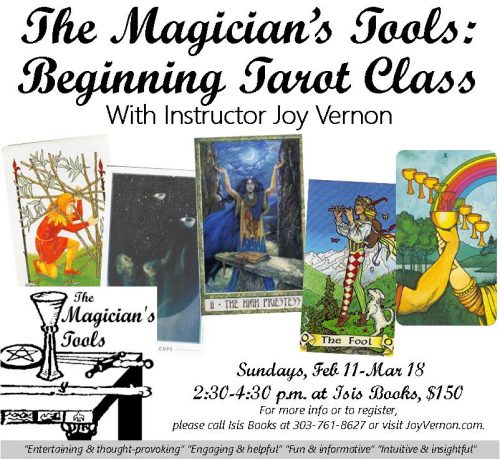




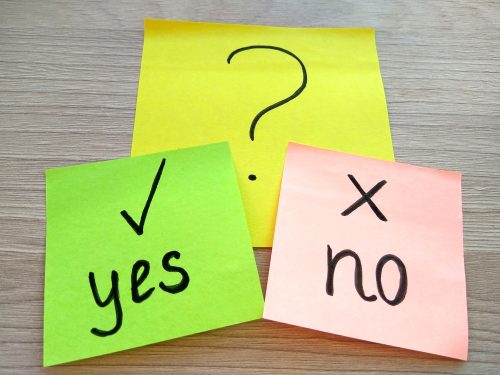

[…] Some decks are beautiful to look at, but fall flat when reading them. Not Mark McElroy’s LoScarabeo Tarot! This deck is as quick-witted as its author, and the loquacious scenes are at times glib then just as easily deeply sagacious. This deck draws equally on the RWS, Thoth, Tarot de Marseille, and other historical traditions. This tag-team symbolism brings out the best of each lineage, proving each can play well with others! This deck is on my list of all-time favorites. […]